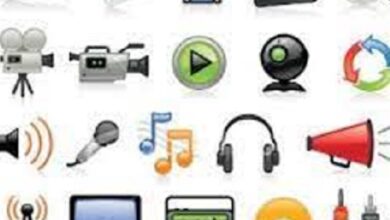Have you ever wondered if your child should study in a public or private school? This is a very serious question and involves many aspects.
The Summary of Social Indicators 2018 report, by IBGE, disclosed that only 36% of students who completed high school in the public network entered a college, while in relation to high school students in the private network, this percentage more than doubles: 79.2%.
Choosing the ideal school for their children can be a challenge for parents, since private institutions demand a certain amount of investment , but, on the other hand, the level of public education may not meet learning expectations.
And it was to help you understand these and other aspects that we created this article! Continue reading and see 7 important factors to analyze whether your child should go to a public or private school.
How to choose an ideal school?
Every family has its quirks, doesn’t it? Some parents may want their children to have access only to formal teaching content and others may want the school to offer more teaching options.
On the side of schools it is no different. Some will prioritize the content to be taught and others will add new skills that will help students develop more broadly, taking into account the current context.
Because of this, it is important for parents to choose an educational institution that will be able to meet their needs. And because of this plurality, it is essential to carefully analyze which is really the best option for your specific case.
Therefore, see below 7 aspects for you to analyze whether your child should go to a public or private school.
1. Communication with the family
Communication between school and family is certainly greater when the student is enrolled in a private school. This is because parents or guardians seek to have greater interaction about what their children are producing at school, since they are investing in their studies. On the other hand, the institution also maintains an open dialogue through various tools.
This partnership between school and family is very important for the development of students, because when educators identify a learning difficulty , for example, they can communicate it to the school’s coordination so that, together with the student’s family, they can find solutions in timely.
Many private institutions offer interactive websites and even applications so that parents can follow their child’s school performance, the activities that are being given, in addition to interacting with other parents and with the school itself.
2. Infrastructure
We know that the maintenance of a public school requires funds sent by the federal, state or municipal government. A private school, on the other hand, is maintained by paying monthly fees from enrolled students.
However, what we see, in most cases, is that the budget of the public institution is not enough to be applied in improvements, since it is used primarily to maintain basic services. In a particular administration, this money is also invested in improvements in the structure , with the aim of increasingly benefiting the development and stimulation of students.
3. Number of students per room
The number of students also changes when they are enrolled in a public or private school. A public school classroom typically has between 30 and 40 students, who are also extremely diverse in learning levels. This makes the work of the teacher very difficult, who, in this context, sees very few students excelling.
On the other hand, the private school has a smaller number of students per class, allowing the teacher to offer personalized attention. In addition, educators are able to focus on the doubts of each one and, therefore, the performance of the class tends to be much better.
This may seem like a simple detail, but the smaller the number of students in the room, the smaller the possibility of parallel conversations and noise that hinder reasoning.
In a public school, this factor is much more complicated, because with many students per class, consequently there are more behavioral problems that interfere with classes and the teacher is not able to pay attention to all of them.
4. Encouraging child protagonism
This is a discussion that has been growing in recent years, mainly due to the technologies that have been increasingly used as a knowledge tool by schools.
Child protagonism is, therefore, a pedagogical posture that shows the student that he can be the agent of his own development and capable of proposing many solutions to the problems around him.
In this way, technology is a great ally of teachers in the task of working with leadership in education.
And when parents invest in schools that prioritize this teaching-learning dynamic, they encourage a series of benefits for their children, such as encouraging responsibility, proactivity, socio-emotional skills, the development of self-knowledge, empathy and respect for differences.
Public schools can also work with children’s protagonism, but the resources for this type of approach are undoubtedly more abundant in private education, which has more technological resources in classrooms and in specific laboratories.
5. Dynamicity of the contents
The contents in public schools tend to be more rigid and without many changes, which contrasts with the diversity of students. Thus, it is very common for the same methodology to be applied for a long period of time to students with different learning levels, which makes their development difficult.
On the contrary, the private school adjusts itself to the particularities of the student. In a quality private education, the student is encouraged to reflect and not just mechanically learn the contents without any questions. Through constructivist teaching, the teacher becomes the teaching-learning mediator and the student builds his own knowledge.
6. Qualification of teachers
As for teachers, it is worth mentioning that selection processes in the private school system tend to be more rigorous and this helps to ensure the hiring of well-prepared professionals.
It is also important to clarify that in public education there are differences in the way each state or municipality treats education. In some locations, the educational system can make it difficult for teachers to work, which is not valued, receives low pay and is little encouraged.
But it is worth mentioning that the continuing education of teachers is offered both in public and private schools, what really changes is the fact that the teacher is able to pass on these new learnings and methodologies in the classroom, which, as we have seen, is much more difficult on the public network.
7. Support in unusual situations
Finally, another important detail that highlights the private school is its ability to adapt to atypical situations and support for students and families.
A good example of this were the changes in teaching-learning relationships brought about by the new coronavirus pandemic, which even with educational institutions closed, with the aim of reducing the number of contaminated people, adapted to prevent their students from missing the year. academic.
These changes involved the use of digital tools as mediators in the relationships between teachers and students, who started to do online classrooms, video calls, among other remote activities.
Public schools, on the other hand, despite a lot of effort, were unable to offer the same teaching as the private ones, so many students had to study on their own and are still waiting for the resumption of the calendar for face-to-face classes.
Therefore, parents should carefully analyze when choosing between public or private school for their children. It is necessary to know the institutions and know which one will best meet your expectations and needs.
And to help you even more with this decision, try to research the private schools that exist in your city, talk to the director or pedagogical coordinator of each one of them.




